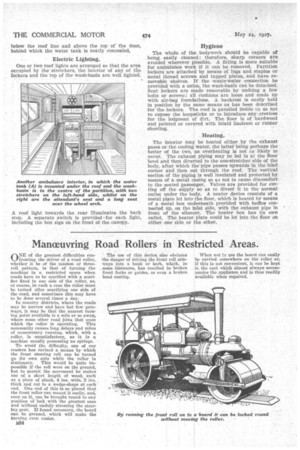Manceuvring Road Rollers in Restricted Areas.
Page 124

If you've noticed an error in this article please click here to report it so we can fix it.
ONE of the greatest difficulties confronting the driver of a Toad roller, whether it be of the tandem or threeroll pattern, is that of turning the machine in a restricted space when roads have to be scarified with a scarifier fixed to one side of the roller, as, of course, in such a case the roller must be turned after scarifying one side of the road, and sometimes this may have to be done several times a day.
In country districts, where the roads may be narrow and have but few gateways, it may be that the nearest turning point available is a mile or so away, where some other road joins that upon
which the roller is operating. This necessarily causes long delays and miles of unnecessary running, which, with a roller, is unsatisfactory, as it is a machine usually possessing no springs.
To avoid the difficulty, one of our readers has devised a means by which the front steering roll can be turned 42,u its own axis while the roller is stationary. This would be quite impossible if the roll were on the ground, but to permit the movement he makes use of a short length of wood, such as a piece of plank, 4 ins. wide, 2 ins. thick and cut to a wedge-shape at each end. One end of this is so placed that the front roller can mount it easily, and, once on it, can be brought round to any position of lock with the greatest ease and without unduly stressing the steering gear. If found necessary, the board can be greased, which will make the turning even easier.
The use of this device also obviates the danger of driving the front roll sideways into a bank or kerb, which, in some instances, has resulted in broken front forks or guides, or even a broken head casting. When not in use the board can easily be carried somewhere on the roller or, if this is not convenient, it can be kept in the cart which almost always accompanies the appliance and is thus readily available when required.




















































































































































































